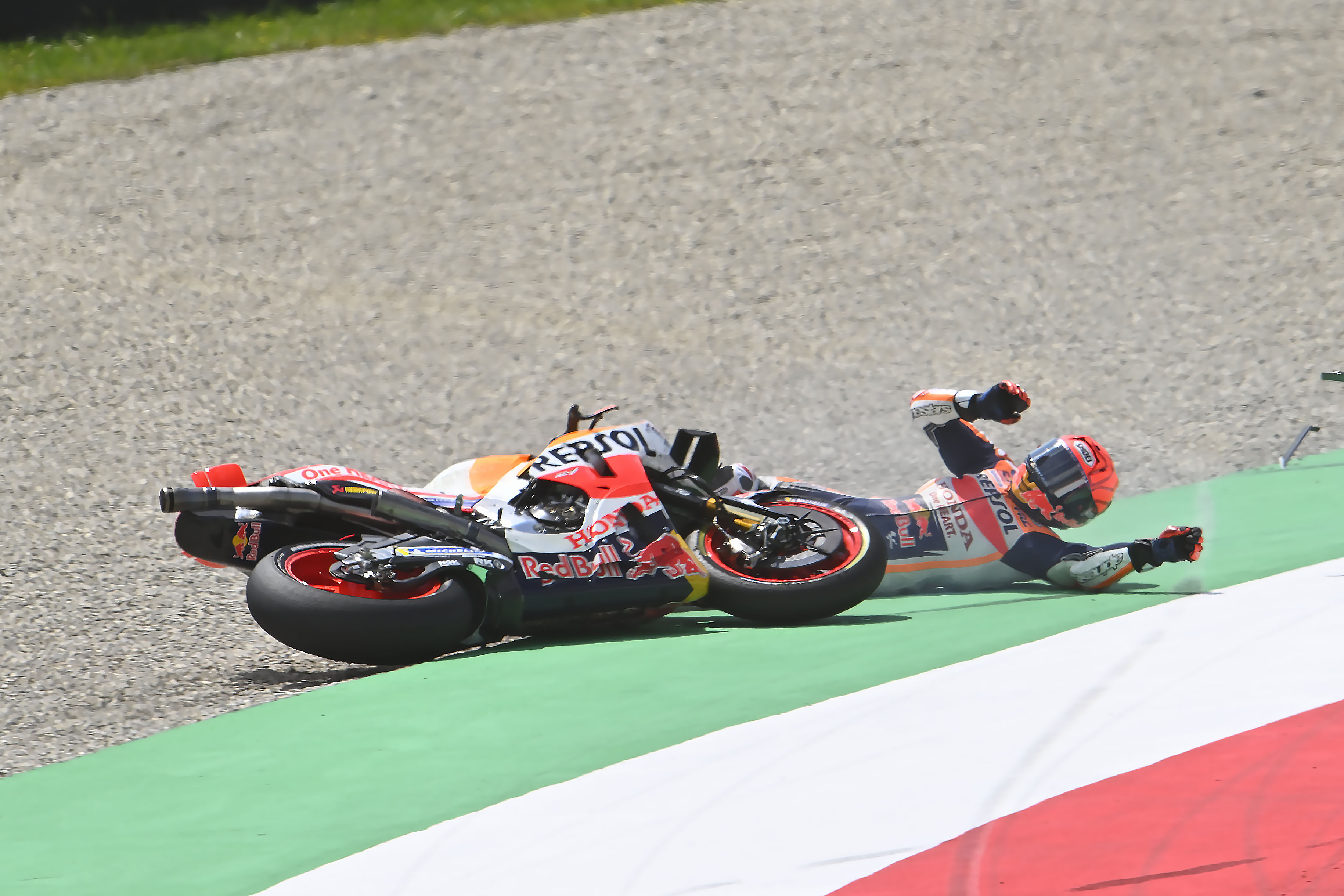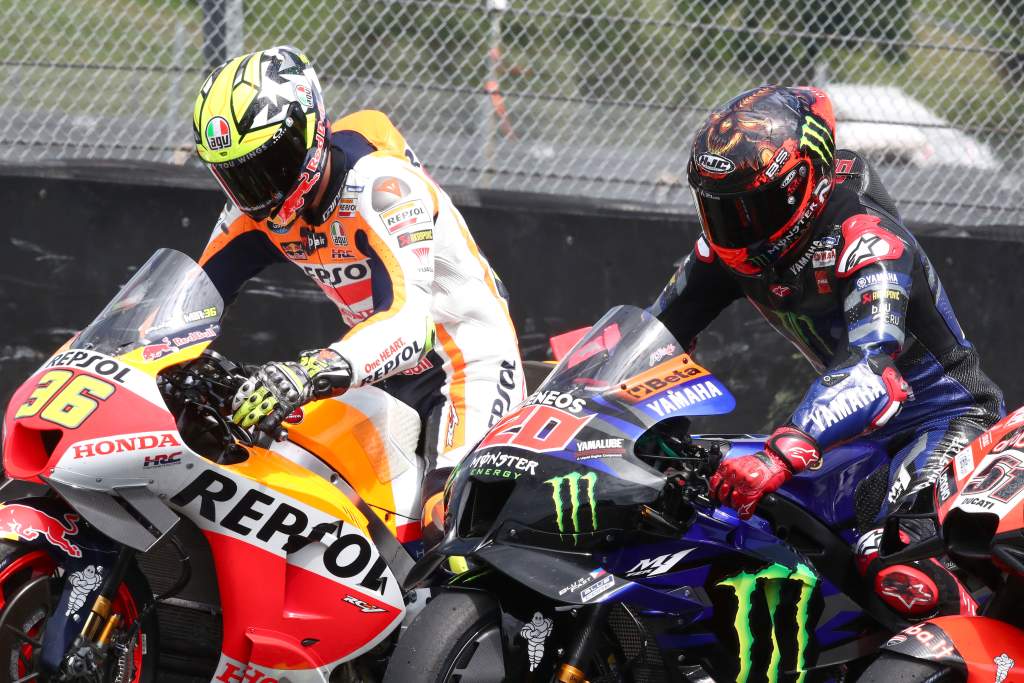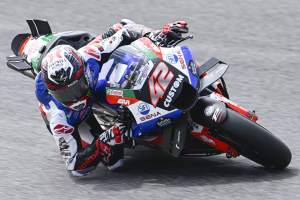MotoGP promoter Dorna’s admission that it was exploring regulatory mechanisms, specifically through an update to the concessions framework, to help out 2023 stragglers Honda and Yamaha was always going to be divisive.
On the one hand, concessions helped other teams close the gap when Honda and Yamaha were on top, and there’s a natural interest in seeing the ultra-talented riders both marques employ mixing it up at the front.
On the other, this isn’t exactly the pinnacle of sporting fairness – and there’s a certain allure to the argument that Honda and Yamaha should have both the know-how and the resource to sort the current situation out simply by refining their own working processes.
Even for those who are in agreement that Honda and Yamaha getting some help is good for MotoGP, there will be no easy consensus on what form that should take, on what actually would be effective. What should be the new concessions requirement – and would the existing concessions of extra wildcards, relaxed homologation and fewer testing restrictions anyway make Yamaha and Honda go faster?

But perhaps the question is different. Perhaps it is as follows: If MotoGP wants a smaller spread between its manufacturers, is ‘making Yamaha and Honda faster’ actually the wrong way to go about it?
Long-serving MotoGP rider manager Simone Battistella believes so – as he outlined on his appearance on The Race MotoGP Podcast.
“I understand Dorna is working to allow the concessions for in particular Yamaha and Honda, in order for them to develop the bike. And from my point of view this is OK as an idea, to make sure that the level is equal,” Battistella told host Toby Moody.
“But they’re doing so allowing Honda and Yamaha to enhance their level. My point is – we need to reduce the level.
“I understand that this sounds like going against Ducati, which is not fair. And it is not fair! Because Ducati was clever, was good, is effective, is dominating because they have a better bike, because they have very good engineers. In a way this is unfair because if the others are sleeping, it’s not Ducati’s fault.
“But… my point is not about being fair or unfair. It’s not about the commercial side, to have more equal races, so that the show is better… it’s simply about safety.
“So this is not a decision of Dorna, this is something for the federation [FIM] to impose for safety reasons.
“We cannot wait for more damage to be done. We haven’t had a single race this season with a full grid of [fit] riders. Not even the first.”
The idea of artificially slowing up the leader is inherently unsatisfying.
The appeal of the concessions mechanism is that, while it’s still an act of performance-balancing, the straggler has to put in the work and unlock the performance through its own efforts.
The desired outcome, though, is in the end the same as in the case of reining in the leader.
Of the tracks that have hosted MotoGP races since the start of last year, the majority – excluding new venues and venues where layout changes have rendered comparisons irrelevant – have had the MotoGP weekend lap record updated in that span. And the top speed record was toppled again this season, now sat at a surreal 366.1km/h – 227.5mph – logged by Brad Binder at Mugello.

Battistella said he is “very worried about the technical situation” in regards to safety.
“The beginning of the season, with the introduction of this sprint race, I was quite curious and worried about the possible incidents. Now I have to say that’s not the issue.
“The issue is, the bikes have developed so much that their speed in terms of laptime has improved too much.
“In motorsport we have a couple of elements that we know are dangerous – the reduction of the braking area and corner speed. If you enhance the corner speed and reduce the braking area, you enhance the level of danger. Because to overtake, a rider has less space to play with, so he has to take more risks.
“Corner speed in motorsport is very simple. [If] you enhance corner speed, when you lose the bike you’re going to get more damages.

“The safety [run-off] areas are the same. The bikes are faster in the corners, but the safety distances are the same. And you have riders hitting the tyres [barriers].”
And for Battistella, the obvious culprits are the same as are often cited by others in and around MotoGP – aero, which is limited only by a partial homologation system and a moveable aero ban is otherwise largely a free-for-all, and ride-height devices, which have now been prohibited on the front of the bike but remain legal on the rear.
“In these grey areas of the regulation, the first one was Ducati that understood there was an opportunity to develop. They did, they were successful, they still are on top of the game. The others are following.
“But this is bringing the bike to a level of performance which is dangerous. It is very simple.”
Ride devices get stuck, which greatly heightens the potential for crashes when it happens. Aero is very wind-sensitive and makes for turbulence that can contribute to sudden losses of braking performance that is self-evidently perilous – see Alex Marquez’s thread-the-needle Mugello moment as an example.

But that is not to say riders don’t see certain benefits, and particularly when it comes to aero the extra stability it offers is appreciated by many.
Perhaps, then, better or adjacent methods of reeling in the development war and curbing the exceptional performance of the current crop of MotoGP machines can be considered. But the fact remains that the 2023 season so far is one dominated by injuries – with Honda the poster child, having entered the summer break with three of its contracted full-time riders unable to take part in the Dutch TT.
“We already have many riders broken,” said Battistella. “And I’m not saying the reason for their injuries is only that – of course the riders are simply trying to ride over the limit of a bike, which is less performant than the others, so they crash. This is for sure the main reason for the Honda riders being injured.
“But the signs there say that this level of performance on the technical side is simply too much.”







